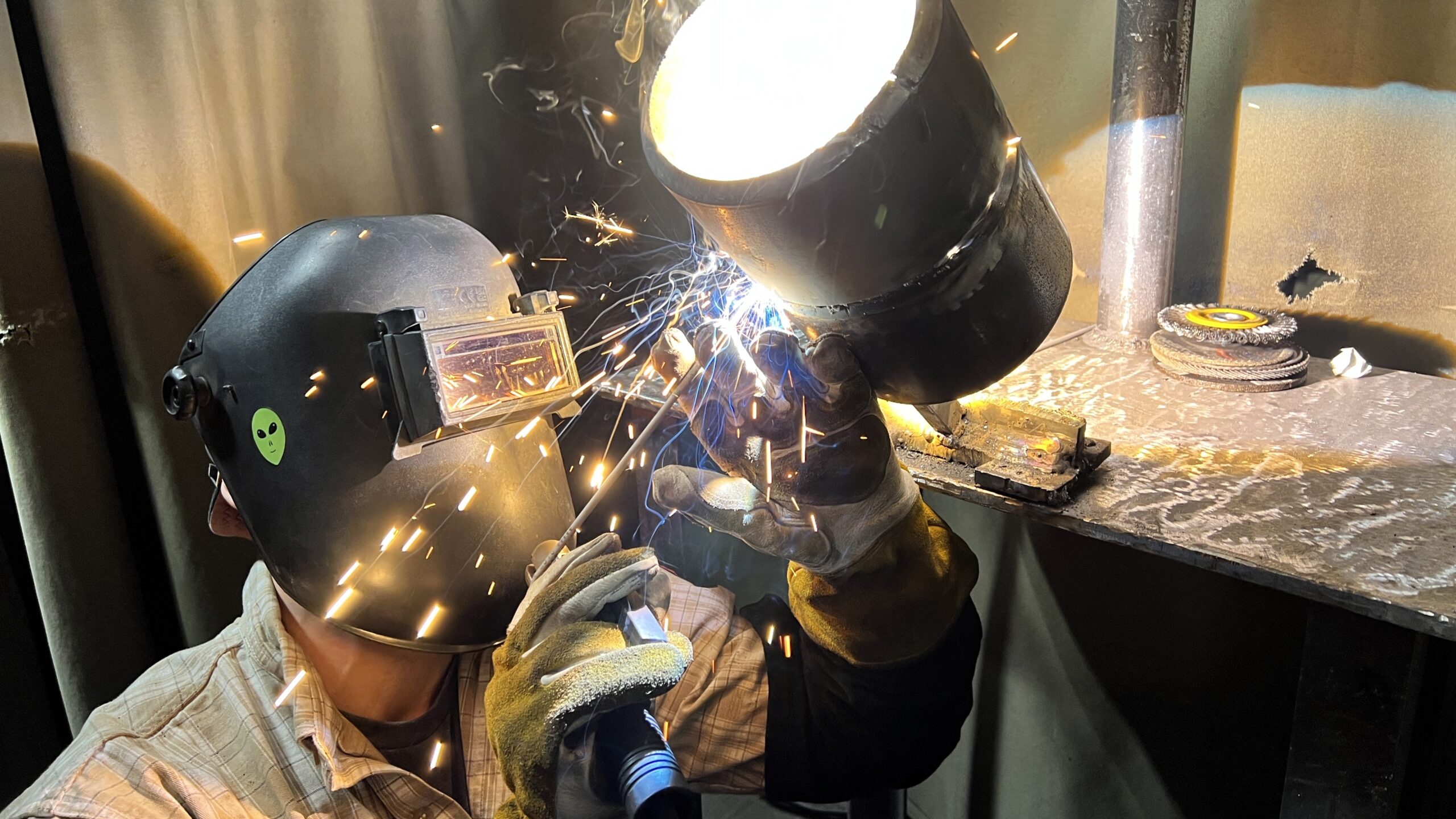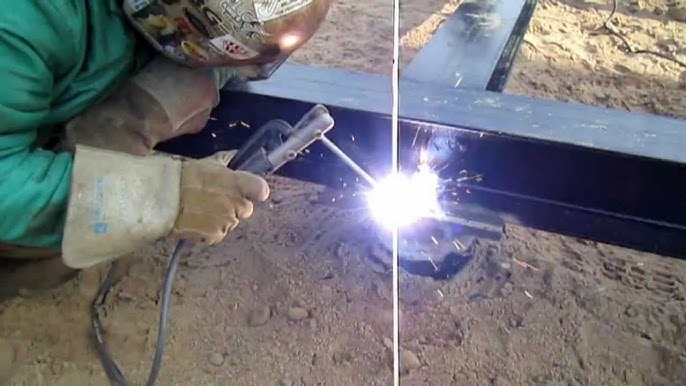Signs of weld failure and what Belgrade can do about them
Wiki Article
All Concerning Welding: Key Insights Into Techniques and Best Practices for Success
Welding incorporates a range of strategies, each suited for details materials and applications. Understanding these methods, such as GMAW, SMAW, and TIG, is essential for accomplishing ideal results. Furthermore, the appropriate equipment and safety techniques can not be overlooked. As preparation and fixing play critical functions in the welding procedure, understanding these elements can greatly enhance the high quality of the end product. What are the essential variables that ensure a successful weld?Recognizing Different Welding Techniques
Welding strategies encompass a selection of approaches, each suited to certain applications and materials. Amongst one of the most common techniques are Gas Metal Arc Welding (GMAW), Shielded Metal Arc Welding (SMAW), and Tungsten Inert Gas Welding (TIG) GMAW, likewise called MIG welding, is popular for its speed and convenience, making it perfect for thin materials. SMAW, or stick welding, is favored for its simpleness and efficiency in outside atmospheres, especially with thicker metals. TIG welding provides accuracy and control, making it appropriate for detailed job and non-ferrous steels (Belgrade Welding). Each technique has its distinct advantages and factors to consider, permitting welders to choose the most effective approach based on the project's requirements, material type, and preferred end results. Recognizing these techniques is crucial for effective weldingVital Welding Devices and Tools
While various welding strategies need specific abilities, the best equipment and devices are similarly necessary for achieving top quality results. Essential welding tools includes welding equipments, which differ depending on the method-- such as MIG, TIG, or stick welding. Protective equipment, including helmets, aprons, and gloves, assurances safety and security and comfort during the procedure. In addition, components and clamps aid safeguard materials in position, guaranteeing accuracy in welds. Consumables like welding rods, wire, and protecting gas are additionally vital parts that influence the top quality of the weld. Tools such as grinders and cutters help with surface preparation and post-weld ending up, contributing to an expert result. Buying high-grade tools ultimately enhances the effectiveness and effectiveness of welding projects.Security Practices in Welding
Correct security techniques are crucial in the welding industry to protect workers from potential hazards. Welders have to use proper individual protective devices (PPE), consisting of safety helmets with appropriate shading, gloves, and flame-resistant garments. Ample air flow is essential to decrease direct exposure to dangerous fumes and gases created throughout the welding process. Additionally, employees must be learnt the correct handling of welding tools to avoid crashes. Fire security procedures, such as maintaining flammable products away from the welding location and having fire extinguishers readily offered, are needed. Routine evaluations of equipment and workspaces can aid determine potential dangers before they result in crashes. By sticking to these safety practices, welders can produce a more secure working atmosphere and decrease threats related to their trade.Preparing Materials for Welding
Preparing products for welding is a crucial action that significantly influences the quality and stability of the end product (Montana Mobile Welding and Repair Belgrade). Proper prep work entails cleansing the surface areas to get rid of contaminants such as rust, dirt, and oil, which can compromise the weld. Strategies such as grinding, fining sand, or using solvents are frequently employed to achieve a tidy surface area. In addition, guaranteeing that the materials mesh well is important; spaces can bring about weak welds. It's additionally essential to take into consideration the positioning and positioning of the elements, as this will certainly influence the ease of welding and the final end result. Finally, picking the ideal filler material and guaranteeing compatibility with the base metals is essential for achieving solid, sturdy weldsTips for Achieving High-Quality Welds
Achieving high-grade welds calls for focus to detail and adherence to ideal techniques throughout the welding procedure. Appropriate joint prep work is essential, making certain surface areas are free and tidy from contaminants. Picking the appropriate filler material and welding strategy based on the base metals is important for suitable bonding. Maintaining regular travel speed and angle while welding can protect against flaws and promote harmony. In addition, regulating heat input is important; excessive heat can bring about warping and compromised joints. If necessary, consistently inspecting the welds throughout the process permits for immediate changes. Utilizing appropriate post-weld treatments, such as cleaning and anxiety alleviation, can improve the longevity and stability of the weld, ultimately ensuring a successful end result.Troubleshooting Common Welding Issues
Welding typically provides difficulties that can impact the high quality and honesty of the last item. Usual concerns such as porosity, inconsistent weld grains, and getting too hot can arise, each needing details troubleshooting techniques. Comprehending these troubles is vital for welders to enhance their abilities and achieve perfect results.Porosity Issues Clarified
Although porosity can commonly be forgotten, it continues to be a critical issue in welding that can compromise the integrity of an ended up item. Porosity refers to the presence of small gas pockets within the weld grain, which can lead and compromise the joint to early failing. This trouble commonly emerges from impurities, wetness, or incorrect protecting gas protection during the welding procedure. To minimize porosity, welders ought to verify that the base products are tidy and completely dry, make use of proper shielding gases, and preserve regular welding criteria. Regularly evaluating the equipment and environment can likewise help determine potential problems prior to they materialize in the weld. Dealing with porosity effectively is necessary for attaining solid, long lasting welds that meet top quality standards.
Inconsistent Weld Beads
Irregular weld grains can substantially influence the high quality and strength of an ended up item. Numerous variables add to this problem, including improper travel rate, wrong amperage settings, and irregular electrode angles. When the welder relocates also promptly, a bead may appear slim and do not have infiltration, while moving also gradually can cause extreme accumulation. Furthermore, using the wrong amperage can result in either damaging or too much spatter, both of which compromise weld honesty. The welder's method, such as inconsistent torch activity, can likewise bring about uneven bead appearance. To mitigate these issues, welders must concentrate on keeping stable, regulated motions and making sure correct tools setups to accomplish harmony in their welds. Consistency is essential to attaining trustworthy and strong welds.Overheating and Bending Issues
Too much heat during the welding procedure can bring about significant overheating and warping problems, affecting the structural honesty of the workpiece. These troubles commonly show up as distortion, which can jeopardize placement and fit-up, making more assembly testing. Variables adding to overheating include the option of welding parameters, such as voltage and take a trip speed, along with the kind of product being bonded. To mitigate these issues, welders ought to preserve regular travel rate and appropriate heat input while keeping track of the workpiece temperature. In addition, preheating or post-weld warm treatment can aid ease stresses brought on by fast cooling - Montana Mobile Welding and Repair. Routine inspection and adherence to finest techniques are important in stopping getting too hot and ensuring the long life and dependability of welded frameworksOften Asked Inquiries
What Are the Career Opportunities in the Welding Industry?
The welding industry offers varied job possibilities, consisting of placements as welders, designers, educators, and examiners. Specialists can function in production, building, aerospace, and vehicle industries, gaining from strong demand and competitive incomes in numerous roles.Exactly How Can I Boost My Welding Speed Without Sacrificing Top Quality?
To enhance welding speed without sacrificing top quality, one ought to practice effective strategies, preserve devices, maximize settings, and boost hand-eye sychronisation. Routine training and seeking website comments can also greatly add to accomplishing quicker, high-grade welds.What Accreditations Are Offered for Welders?
Many qualifications exist for welders, including those from the American Welding Culture (AWS), the National Facility for Building Education And Learning and Research (NCCER), and numerous industry-specific companies. These credentials improve employability and show ability proficiency.How Does Welding Impact the Properties of Metals?
Welding affects the residential or commercial properties of metals by modifying their microstructure, which can bring about modifications in ductility, firmness, and stamina. Heat input and air conditioning prices throughout the procedure considerably impact these material features.Can I Bonded Dissimilar Metals Together?

Report this wiki page